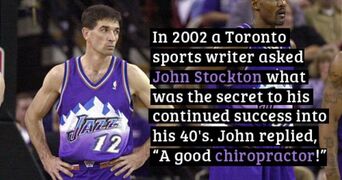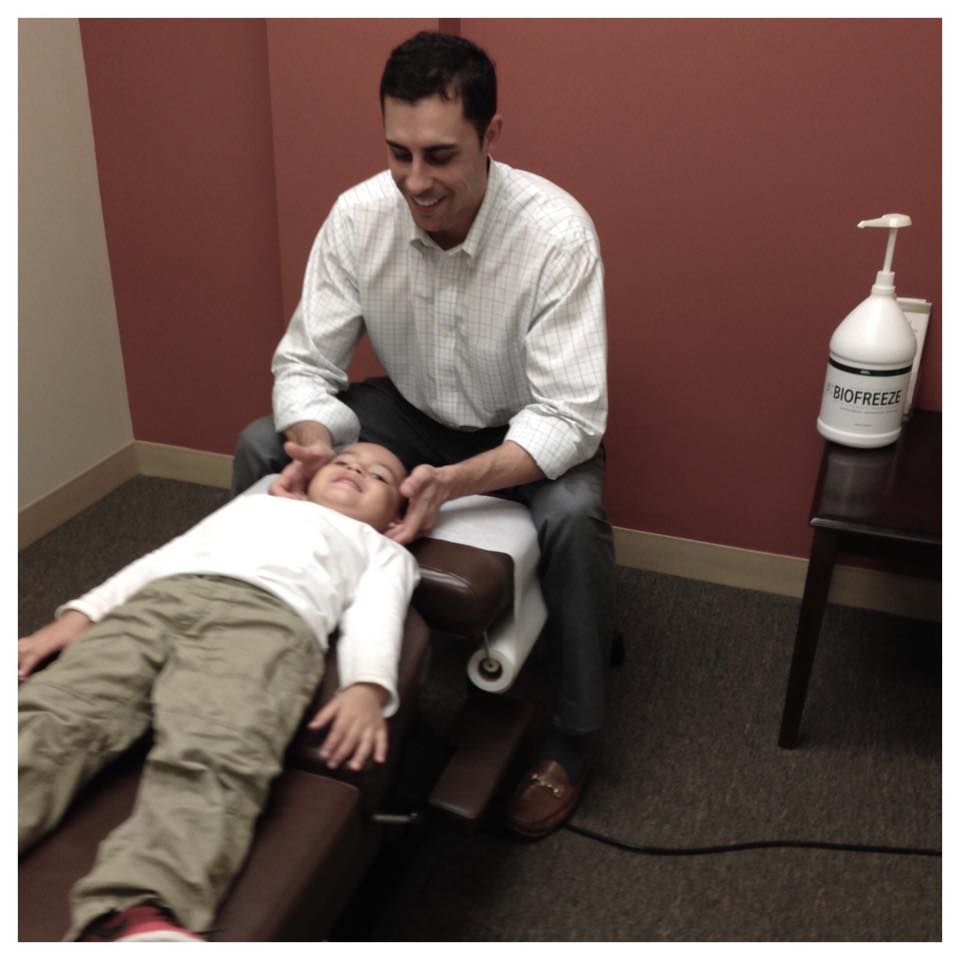 We see many patients in our Shelton office who are suffering from acute or chronic pain, and we've found that our chiropractic approach is very successful and getting people relief. Your body contains roughly 60 different chemicals and each one is responsible for very different functions and regulatory actions. For instance, calcium helps your muscles contract and potassium regulates your heartbeat. Sodium controls the balance of water in your system and fluorine protects your teeth against decay. There are also four chemicals associated with management of pain, and a study published in Journal of Orthopaedic & Sports Physical Therapy has found that chiropractic promotes almost all of them.  For purposes of this study, researchers chose thirty participants who weren’t actively in any sort of pain to see what effect chiropractic treatments had on their levels of neurotensin, oxytocin, orexin A, and cortisol—the four chemicals that impact how much pain a person feels. The subjects were separated into three different groups: ten engaged in cervical spinal manipulation (chiropractic involving the neck area), ten received thoracic spinal manipulation (manipulation to the discs and vertebrae in the middle and upper back), and the final ten subjects were the control group, so they received no spinal manipulation therapy whatsoever. Researchers drew each individual’s blood prior to, immediately after, and two hours post-treatment to determine the starting levels of neurotensin, oxytocin, orexin A, and cortisol, as well as to note any changes that may occur. Immediately upon conclusion of the spinal manipulation sessions, researchers found “significantly higher” levels of both neurotensin and oxytocin in the participants who received either form of spinal manipulation. Cortisol levels increased only for the subjects who engaged in cervical spinal manipulation, and orexin A levels were unaffected by the chiropractic treatments entirely.  These findings suggest that engaging in regular chiropractic care can help your pain on a cellular level by changing the chemical makeup of your body. Not to mention, regular spinal manipulations also work to correct the spinal issue that is causing the pain in the first place. This makes chiropractic an effective two-prong approach to pain management. If you're in pain, chiropractic care can help. We've helped hundreds of patients with auto injury pain, sciatica, back pain, neck pain, and more. Don't put your health second, call to schedule your appointment today! That's a wrap for our blog this week! Stay tuned for our next blog, and send your questions to [email protected] *Plaza-Manzano G, Molina F, Lomas-Vega R, et al. Changes in biochemical markers of pain perception and stress response after spinal manipulation. Journal Orthopaedic and Sports Physical Therapy 2014;44(4):231-9.
21 Comments
Treatment Recommendations for Low Back Pain Include Chiropractic
For patients with chronic low back pain who have had an inadequate response to non-drug therapy, ACP recommends that physicians and patients consider treatment with NSAIDs as first line therapy; or tramadol or duloxetine as second line therapy. Physicians should only consider opioids as an option in patients who have failed the aforementioned treatments and only if the potential benefits outweigh the risks for individual patients and after a discussion of known risks and realistic benefits with patients.
“Physicians should consider opioids as a last option for treatment and only in patients who have failed other therapies, as they are associated with substantial harms, including the risk of addiction or accidental overdose,” said Dr. Damle. “Noninvasive Treatments for Acute, Subacute, and Chronic Low Back Pain” is based on a systematic review of randomized controlled trials and systematic reviews published on noninvasive pharmacological and non-pharmacological treatments of nonradicular low back pain. Clinical outcomes evaluated included reduction or elimination of low back pain, improvement in back-specific and overall function, improvement in health-related quality of life, reduction in work disability/return to work, global improvement, number of back pain episodes or time between episodes, patient satisfaction, and adverse effects. The evidence was insufficient or lacking to determine treatments for radicular low back pain. The evidence also was insufficient for most physical modalities and for which patients are likely to benefit from which specific therapy. The guideline does not address topical therapies or epidural injection therapies. ACP’s clinical practice guidelines are developed through a rigorous process based on an extensive review of the highest quality evidence available, including randomized control trials and data from observational studies. ACP also identifies gaps in evidence and direction for future research through its guidelines development process. ACP’s previous recommendations for treating low back pain were published in “Diagnosis and Treatment of Low Back Pain: A Joint Clinical Practice Guideline from the American College of Physicians and the American Pain Society” in 2007. Some evidence has changed since the 2007 guideline and supporting evidence reviews. The 2007 guideline did not assess mindfulness-based stress reduction, MCE, taping, or tai chi That's a wrap for our blog this week! Stay tuned for our next blog, and send your questions to [email protected]  YES Understanding Carpal Tunnel: Carpal tunnel syndrome is characterized by numbness, tingling, or pain in the hands (particularly the thumb, index finger, middle finger and the thumb side of the ring finger, as this is the part of the hand innervated by the median nerve). The irritation or pain can also refer up the arm, affecting more than just the hand and wrist. The onset might be during sleep, after prolonged activity, or seemingly random. Persistence or recurrence of these symptoms should definitely be addressed! Un-addressed carpal tunnel will lead to a steady increase in these symptoms, and eventually weakness and atrophy of the hands. True Carpal Tunnel is an irritation of the median nerve at the transverse carpal ligament. Carpal tunnel affects about 1 in 10 people, making it the most common nerve compression syndrome! Carpal tunnel syndrome often affects, machinists, hairdressers, musicians, massage therapists, even chiropractors! Anyone making prolonged repetitive use of their hands, fingers and wrists. Now that everyone is texting and typing as much as typists used to when this syndrome was identified... It can really affect anyone. Understanding Nerve Compression Syndromes: When you have symptoms of numbness or tingling, this usually indicates a nerve problem. Nerves run from the spine throughout the body to give us sensation and feeling, giving our brains vital information about the world around us. When a nerve is compressed or pinched, it interferes with these signals. This is what happens when your arm or foot falls asleep after sitting on it for a long time. Except with carpal tunnel you can’t quite shake it out the way you can a sleeping foot. The more frequent and persistent numbness and tingling become the more severe the problem is. Carpal Tunnel Syndrome specifically compresses the median nerve at the wrist. There are other syndromes that have the same symptoms as carpal tunnel, for example, the median nerve can be compressed at the elbow such as in pronator teres syndrome, or at the shoulder such as in thoracic outlet syndrome, or in the neck due to a subluxation or misalignment in the cervical spine. That is why it is important to get a proper diagnosis for your symptoms. There have been many cases of patients receiving surgery for carpal tunnel but, the surgery did noting for their symptoms as they actually had one of these other conditions. What's happening in the 'tunnel'? The transverse carpal ligament is a round band of fascia that hold the flexor muscles in place. Imagine a rubbery calamari ring in your wrist, and that your muscles and nerves are strands of spaghetti strands are running through it! (Are you hungry yet?) The wrist is a high traffic area! You’ve got carpal bones, you’ve got the tendons of the flexor muscles, you’ve got the median nerve… When this area gets over-crowded the other tissues in the space will compress the median nerve and cause these symptoms. There are several things that can cause a jam-up in this area include edema, subluxation of a carpal bone, fascial adhesion, inflammation of the flexor muscle tendons, and inflammation of the transverse carpal ligament itself. How can this condition be treated?
Manual therapy can be really effective in treating carpal tunnel. Calming the overworked tissues, reducing inflammation, breaking fascia and adhesions, and reducing pain. Massage, acupuncture, chiropractic adjustment of the wrist, stretches and exercises, using a wrist brace to splint the wrist, resting the wrist, cortisol shots, and even surgery are all options. If any of the above exercises causes numbness, tingling, or pain in the hands, make an appointment to get checked for carpal tunnel. Fun Facts:
That's a wrap for our blog this week! We hoped you learned a little more about this common condition. Stay tuned for our next blog, and send your questions to [email protected] |
AuthorThe Shelton Sports & Spine Blog is for answering your questions! Stay tuned to learn about our practice, health, food, treatments, and more! Archives
July 2024
Categories |
|
|
4 Armstrong Road
Suite T120 Shelton, CT 06484 (203) 842-8631 |





 RSS Feed
RSS Feed